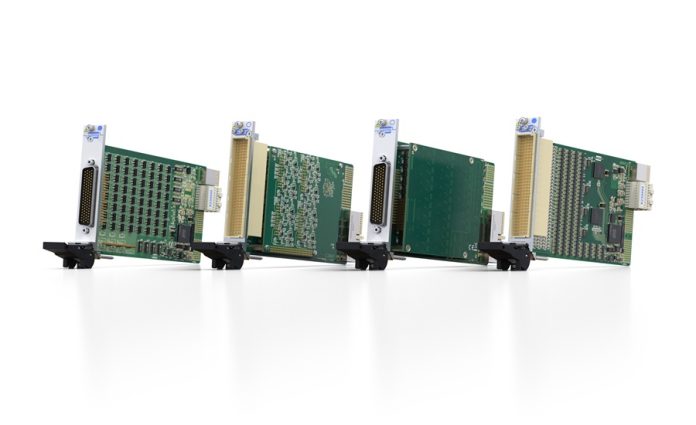Pickering Interfaces, a leader in modular signal switching and simulation products for electronic test and verification, has introduced four new industrial digital I/O families for PXI- and LXI-based systems. These additions enhance Pickering’s industrial digital input and output modules range, offering higher density, expanded voltage and current ranges, and programmable logic levels in PXI and PXIe form factors. With these new modules, Pickering now holds the industry’s largest and most comprehensive portfolio of PXI and PXIe digital I/O modules.
Digital input and output modules are crucial in automated test systems for operating external devices or interfacing with external logic. Digital inputs test signal voltage levels, while digital outputs can act as a current source, sink, or both. These industrial digital I/O modules are suitable for acquiring signals from digital sensors, and communicating with industrial devices like PLCs, and driving relays, solenoids, and lamps.
“At Pickering Interfaces, we’re committed to providing the largest and most capable catalogue of industrial digital I/O products in the industry,” said Paul Bovingdon, Pickering’s Technical Engineering Manager. “These new modules reflect our commitment to meeting the evolving needs of our customers.”
High-Density Digital Output Modules (Model 40/42-412A)
These high-channel-count output modules expand the existing 40-412 PXI range, adding a PXIe option (model 42-412A). This family offers up to 64 output channels (with 16, 32, 48, or 64 output channel variants), featuring an external maximum output voltage range of 50V and 0.5A low-side or high-side driving capability.
High-Density Digital Input Module with Dual Programmable Thresholds (Model 40/42-414)
The new 40-414 (PXI) and 42-414 (PXIe) digital input modules offer high channel count, high input voltage capability, and dual programmable threshold settings per bank. Independent banks of eight channels allow for multiple voltage level detection across the module. Dual thresholds enable convenient status determination of digital signals by comparing each input voltage to two programmable threshold levels, useful in functional test applications, often replacing the need for a DMM. Available variants include 32, 64, 96, or 128 input channels with maximum threshold voltages of 50V, 100V, 200V, or 300V. These modules effectively determine the state of industrial digital signals in automotive, aerospace, and rail applications, reducing external signal conditioning circuits and minimizing test system complexity and footprint.
Semi-Dynamic Digital I/O Module (Model 40/42-419)
The 40-419 (PXI) and 42-419 (PXIe) digital I/O modules provide 16 to 64 I/O channels with up to a 60V range via external supply or four built-in voltage rail selections (+3.3V, +5V, +12V, or +24V), and up to 300mA current output capability. They also offer I/O direction selection for each port/channel, with each port of eight channels being set as inputs or outputs together, or individual channels within a port being set as input or output. The module provides semi-dynamic 8-bit pattern acquisition and generation using on-board memory.
Relay Driver Module (Model 40/42-411A)
This update to the existing model 40-411 includes PXIe options, offering variants with 16 to 64 low-side outputs, 60V, 1A relay driving capability, and three options for on-board relay voltage supply (plus a mixed voltage option) for low-power applications. The 40-411A (PXI) and 42-411A (PXIe) models are designed to drive external relays from a PXI or PXIe system or Pickering Interfaces’ LXI modular chassis.
Models 40/42-411A, 412A, and 419 feature built-in protection systems, including over-current detection and over-voltage clamp or thermal overload. These modules can drive relay coils without flyback diodes or prevent relay coil current from flowing back into the chassis backplane using an isolation barrier. They offer flexibility with external or internal supply options and high-side or low-side driving capability to meet various load capacity requirements.
The modules’ front panels use a 78-pin D-type connector for models 40/42-411A and 412A or a 160-pin DIN 41612 for models 40/42-414 and 419, supported by a range of connector accessories.








